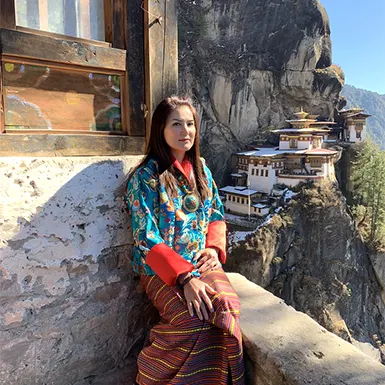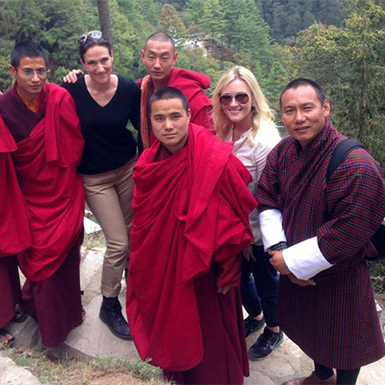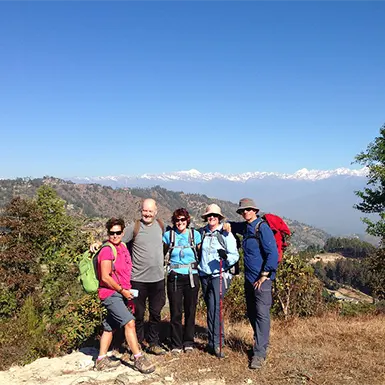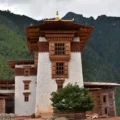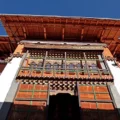Taktsang Monastery, often called Tiger’s Nest Monastery, is one of Bhutan’s most iconic and revered landmarks. It nestles in the Paro Valley. This sacred site clings dramatically to a cliffside at an elevation of 3,120 meters (10,232 feet), offering visitors spectacular views and a profound sense of tranquility amidst its historical and spiritual significance. Its unique and precarious position provides breathtaking views of the surrounding landscapes and holds deep significance in Bhutanese culture and Buddhism.
Location and Significance
Located about 10 kilometers (6.2 miles) north of Paro town, Taktsang Monastery sits on the edge of a steep, rocky cliff. This spectacular setting provides stunning views and showcases remarkable Bhutanese architecture and engineering.

Cultural and Spiritual Importance
- Pilgrimage Site: As one of the most important pilgrimage sites for Bhutanese Buddhists, Tiger’s Nest Monastery holds immense spiritual value. Legend has it that Guru Padmasambhava, revered as Guru Rinpoche, meditated in a cave on this site during the 8th century. He arrived on the site on the back of a tigress, giving the monastery its name, Tiger’s Nest. His meditation imbued the site with profound spiritual energy, making it a significant place for followers of Buddhism.
- Guru Padmasambhava: Guru Padmasambhava, considered the second Buddha in Bhutanese Buddhism, has teachings and practices that form the foundation of the region’s religious traditions. Many regard the cave where he meditated as one of the most sacred sites in Bhutan.
- Symbol of Devotion: Taktsang Monastery represents more than just a physical structure; it symbolizes faith, devotion, and the spiritual tour. The monastery reflects the harmonious relationship between humans and nature, a core aspect of Bhutanese beliefs. Its location and architecture embody the idea of spiritual ascent, with the physical climb to the monastery mirroring the spiritual tour toward enlightenment.
- Architectural Marvel: The construction of Tiger’s Nest Monastery demonstrates the dedication and skill of Bhutanese artisans. The monastery’s construction on a sheer cliff face makes it appear to defy the laws of gravity. The monastery’s intricate details and meticulous craftsmanship testify to the site’s profound spiritual and cultural importance.
- Spiritual Energy: Visitors and pilgrims often experience a profound sense of peace and spiritual energy at Taktsang Monastery. The site’s tranquility and the majestic natural surroundings contribute to its aura of sacredness.
Historical Background: A Tapestry of Myth and Reality
The Taktsang Monastery, often called the Tiger’s Nest Monastery, is a place where myths and history intertwine. This sacred site’s origins trace back to the 8th century when legend says Guru Rinpoche, also known as Padmasambhava, flew to the cliffside on a tigress’s back. He chose this dramatic location to meditate and conquer evil spirits, thus introducing Buddhism to Bhutan. This legend is not just a story; it’s woven into the spiritual identity of the monastery and the entire country.
Founding and Early Development
Guru Rinpoche’s visit established the site’s spiritual importance, but the physical monastery came later. Builders constructed the first temple complex in the late 17th century. Over time, Tiger’s Nest Monastery expanded into a collection of buildings, each with its unique purpose and architectural style. It became a shining example of Buddhist practice and a popular pilgrimage destination.
Key Historical Events
The history of Tiger’s Nest includes several significant events:
- 1951 Fire: A devastating fire destroyed much of the monastery, including valuable artifacts and religious texts.
- 1958 Reconstruction: The Bhutanese government led a significant reconstruction effort, restoring the monastery to its former glory.
- 1998 Fire and Rebuilding: Another fire ravaged the monastery, but skilled artisans meticulously rebuilt it with greater attention to detail and cultural preservation.

The Monastery’s Enduring Legacy
Despite these setbacks, Taktsang Monastery is a symbol of resilience and devotion. Today, it continues to welcome pilgrims and visitors who come to pay their respects, meditate, and experience the spiritual atmosphere. The monastery’s history is a testament to the enduring power of faith and the cultural importance of this sacred site.
Taktsang Monastery Guide: A Historical Perspective
If you want to delve deeper into the history, here are some recommendations:
- Visit the Museum: The monastery has a small museum showcasing artifacts and providing insights into its past.
- Talk to the Monks: Chat with the resident monks. They often share captivating stories and insights.
- Explore the Paro Valley: The Paro Valley is rich in history and culture. Consider visiting other historical sites to better understand Bhutan’s past.
Architectural Details: Awe-Inspiring Design in a Dramatic Setting
Taktsang Monastery, famously called the Tiger’s Nest, is an architectural wonder that captivates all who see it. Its unique design and breathtaking cliffside location make it an actual world wonder. Built on a sheer rock face 900 meters (2,953 feet) above the Paro Valley, it defies gravity, inspiring awe in all who see it.
Architectural Style: Tradition and Innovation in Perfect Harmony
The monastery’s architecture is a testament to Bhutanese ingenuity and skilled craftsmanship. It beautifully blends traditional elements with innovative construction techniques adapted to the challenging terrain. The structures, built mainly from wood and stone, reflect local resources and building practices.
Key Architectural Features
- Whitewashed Walls and Golden Roofs: The monastery’s whitewashed walls and golden roofs shine brightly in the sun, contrasting beautifully with the rugged cliffs.
- Intricate Woodwork: Ornate wooden carvings adorn the monastery’s doors, windows, and balconies, demonstrating the artistry of Bhutanese artisans.
- Colorful Murals: Vibrant murals depict Buddhist deities, legends, and scenes from Guru Rinpoche’s life, adding a spiritual touch to the interiors.
- Prayer Wheels: Rows of prayer wheels line the monastery’s courtyards, inviting visitors to participate in the ancient Buddhist practice of spinning them for blessings.
- Caves and Temples: The monastery complex includes several caves, the sacred cave where Guru Rinpoche meditated, and various temples dedicated to different deities.
Construction Techniques: Overcoming Challenges with Ingenuity
Constructing a monastery on a sheer cliff presented unique challenges. Bhutanese architects and engineers found clever solutions to overcome these obstacles:
- Wooden Beams and Stone Foundations: The monastery’s foundation rests on wooden beams secured into the rock face, providing a stable structure base.
- Bridges and Stairways: A network of narrow bridges and steep stairways links the different buildings and provides access to various monastery levels.
- Stone Walls and Terraces: Retaining walls and terraces created flat areas for building and prevented erosion.
- Skilled Craftsmanship: Skilled artisans carved the rock face to create niches, platforms, and paths, seamlessly integrating the monastery with the natural landscape.
Appreciating Taktsang’s Architecture: Tips for Visitors
To fully experience the architectural wonders of Tiger’s Nest Monastery, consider the following:
- Observe the Details: Take the time to admire each building’s intricate woodwork, vibrant murals, and unique features.
- Learn About Construction: Ask your guide or the monks about the construction techniques that brought this incredible structure to life.
- Photography: While the temples prohibit photography inside, you can capture stunning images of the monastery’s exterior and surroundings.
Spiritual Significance: A Sacred Journey for Buddhist Pilgrims
Affectionately known as the Tiger’s Nest, Taktsang Monastery holds immense spiritual weight for Buddhists globally. It transcends its role as a monastery, serving as a revered pilgrimage site where devotees seek blessings, meditate, and connect deeply with their faith.
Legends and Religious Importance
Legend has it that Guru Rinpoche, a pivotal figure in Tibetan Buddhism, arrived at Taktsang Monastery on the back of a tigress in the 8th century. He spent three years, three months, three weeks, three days, and three hours in deep meditation within a cave that now stands as the sacred heart of the monastery complex. Many believe this act imbued the site with potent spiritual energy, making it a powerful place for spiritual practice and connection.
For Buddhists, a visit to Tiger’s Nest Monastery is a profoundly meaningful experience. The challenging hike to the monastery symbolizes a physical and spiritual tour, testing one’s endurance and devotion. Upon reaching the monastery, pilgrims offer prayers, perform rituals, and seek blessings from the revered deities enshrined. The tranquil atmosphere and breathtaking natural surroundings enhance the spiritual experience, creating a sense of peace and connection with the divine.
Religious Festivals and Vibrant Celebrations
Throughout the year, Taktsang Monastery hosts a variety of religious festivals and special events, attracting both pilgrims and curious visitors:
- Tshechu: This colorful festival, celebrated annually in the Paro Valley, features lively masked dances, sacred ceremonies, and the unveiling of a massive thangka (religious scroll).
- Guru Rinpoche’s Birthday: Observed on the 10th day of the fifth lunar month, this festival honors Guru Rinpoche’s birth with special prayers and offerings at the monastery.
- Other Occasions: The monastery observes significant Buddhist holidays like Losar (Bhutanese New Year) and Saga Dawa (Buddha’s enlightenment), adding to the vibrant tapestry of spiritual practices and celebrations.
Planning Your Spiritual Journey: A Taktsang Monastery Guide
If you’re planning a pilgrimage or a visit to Tiger’s Nest Monastery, consider these practical tips:
- Prepare for the Hike: The trek to the monastery requires moderate physical exertion, so wear comfortable shoes, bring ample water, and take breaks as needed to enjoy the scenery and conserve energy.
- Respect Religious Practices: Dress modestly and maintain a respectful silence inside the monastery. Remember, this is a sacred place of worship for many.
- Attend a Festival: Schedule your visit to coincide with one of the monastery’s festivals to witness the vibrant expression of Bhutanese spirituality and culture.
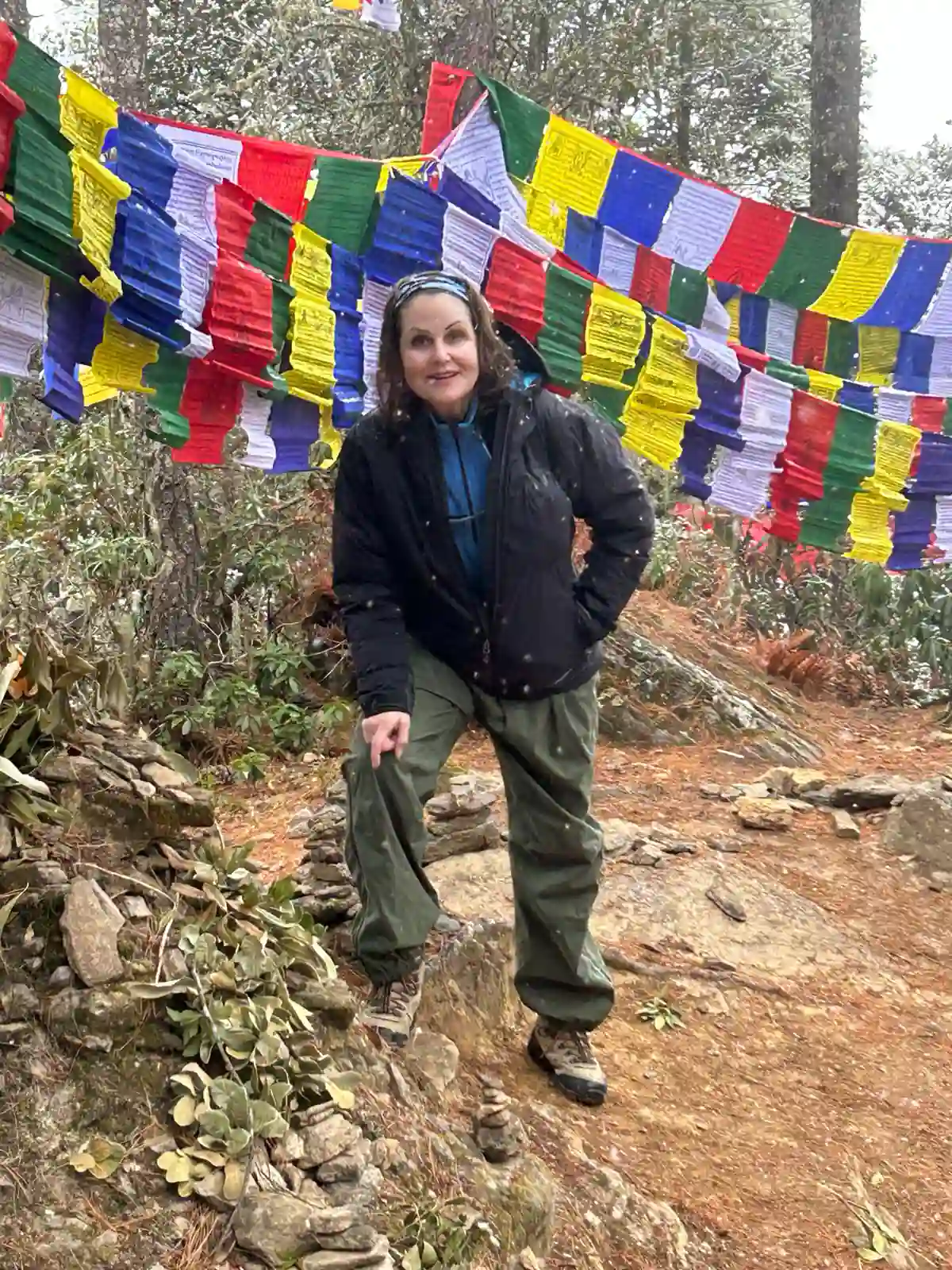
Experience the Taktsang Monastery Hike: A Spiritual and Scenic Adventure
The Taktsang Monastery hike, also known as the Tiger’s Nest Monastery hike, is a must-do for adventurers and spiritual seekers visiting Bhutan. This moderately challenging trek offers stunning views of the Paro Valley and a unique opportunity to visit one of Bhutan’s most revered landmarks.
Starting Points and Duration
Start your hike at the mountain’s base near the Taktsang cafeteria. Depending on your speed and fitness level, it will take two to three hours to reach the monastery.
Difficulty Level
The Tiger’s Nest Monastery hike is moderately challenging. While the trail is well-maintained, some sections are steep, with an elevation gain of roughly 900 meters. However, the breathtaking scenery and the anticipation of reaching the Tiger’s Nest make the effort worthwhile.
Best Times to Visit
The ideal times for this hike are spring (March-May) and autumn (September-November). These seasons offer pleasant temperatures, clear skies, and vibrant landscapes. Avoid the monsoon season (June-August) since the trail can become slippery, and limited visibility may hinder the experience.
What to Expect Along the Trail
- Scenic Beauty: The trail winds through pine forests, offering glimpses of the Paro Valley below.
- Prayer Flags: Colorful prayer flags dance in the breeze, adding to the spiritual ambiance.
- Cafeteria: A cafeteria halfway up the trail provides a welcome rest stop with refreshments and beautiful views.
- Waterfalls: Depending on the time of year, you may encounter small waterfalls along the trail.
- Final Ascent: The final ascent to the monastery involves a challenging climb up a series of steep steps.
Tips for a Successful Hike
- Physical Fitness: Ensure you’re in reasonably good shape before hiking.
- Acclimatization: If you’ve arrived from a lower altitude, give yourself a day or two to adjust to the higher elevation.
- Clothing and Gear: Wear sturdy hiking boots, dress in layers to accommodate changing temperatures, and remember a hat and sunscreen for sun protection.
- Water and Snacks: Pack plenty of water and snacks to maintain energy throughout the hike.
- Guide: Consider hiring a local guide to provide valuable insights into the monastery’s history and significance.
- Start Early: To avoid the midday heat, start early in the day for a more pleasant hike with fewer crowds.
- Respect the Site: Remember Taktsang Monastery’s sacred nature. Dress modestly, maintain a quiet atmosphere inside the temples, and avoid taking photos inside the buildings.
Experiencing Taktsang Monastery: Stories from the Tiger’s Nest
Visitors to Taktsang Monastery, affectionately called the Tiger’s Nest, don’t just visit; they experience it. Each person returns with unique stories filled with spirituality, wonder, and personal accomplishment.
Voices from the Path
- “The hike was tough, but each step brought me closer to a deep sense of peace. Reaching the monastery felt like a spiritual triumph.” – Sarah, a pilgrim from Australia.
- “The panoramic view from the Tiger’s Nest is simply awe-inspiring. It’s a place where you can feel the energy of centuries of devotion.” – Tashi, a local guide.
- “The vibrant colors, intricate details, and the sheer audacity of the architecture left me speechless. It’s a true testament to human creativity and faith.” – David, a photographer from the USA.
Capturing the Moment: Photography Tips
While photography isn’t allowed inside the monastery temples, you’ll find countless photo opportunities along the trail and around the complex:
- The Cafeteria Viewpoint: Halfway up the hike, the cafeteria offers a panoramic view of the monastery nestled against the cliffside. Capture the stunning contrast between the artificial structure and the natural landscape.
- The Waterfall: During the wet season, a cascading waterfall near the monastery adds a touch of magic to your photos.
- The Prayer Wheel Area: The prayer wheels area, decorated with colorful flags and mantras, creates a vibrant and photogenic scene.
- The Final Approach: As you climb the final steps toward the monastery, capture the anticipation and awe-inspiring views.
- The surrounding Paro Valley: From different spots on the trail, you can capture panoramic vistas of the lush Paro Valley, with the monastery perched majestically in the distance.
A Journey of Reflection and Inspiration
A visit to Taktsang Monastery is a tour of reflection and inspiration. It’s a place to connect with your spirituality, marvel at architectural ingenuity, and witness the breathtaking beauty of the Himalayas. Whether you’re a devoted Buddhist or a curious traveler, it promises an experience that will leave a lasting impression.
Taktsang Monastery Guide: Making it Personal
- Connect with Locals: Engage with local people, who are usually eager to share their knowledge and stories about the monastery.
- Take Your Time: Take your time with your hike and your visit. Soak in the atmosphere and reflect on the spiritual significance of this sacred site.
- Journal Your Experience: After your visit, take a moment to write about your experience. Your personal stories and observations will add another layer to the rich tapestry of narratives associated with the Tiger’s Nest.
Conservation Efforts: Safeguarding the Tiger’s Nest for the Future
The iconic Tiger’s Nest is a cherished spiritual and cultural gem with immense historical significance. Due to its delicate location and unique architecture, preserving this sacred site demands ongoing conservation efforts.
Preservation Measures: A Delicate Balancing Act
The Bhutanese government, collaborating with various organizations, actively safeguards through a multifaceted approach:
- Restoration and Maintenance: Experts regularly inspect and repair the monastery to address wear and tear caused by weather and time.
- Fire Prevention Systems: Following two devastating fires, the monastery now boasts modern fire detection and suppression systems to protect it from future disasters.
- Limited Access: Authorities cap the number of daily visitors to minimize the impact of foot traffic and potential damage.
- Guided Tours: All visitors must take guided tours, ensuring responsible behavior and adherence to preservation guidelines.
- Cultural Sensitivity: Visitors are educated about the site’s religious significance and encouraged to respect local customs and traditions.
Tourism’s Impact and Sustainable Solutions
Tourism is vital to Bhutan’s economy, and Tiger’s Nest Monastery is a significant draw for visitors. However, increasing numbers of tourists challenge the site’s delicate ecosystem and cultural integrity. To address these issues, the Bhutanese government has adopted a “High Value, Low Impact” tourism policy.
- Sustainable Tourism Practices: The government focuses on attracting environmentally conscious travelers who value cultural preservation and responsible tourism.
- Limited Infrastructure: Development in the surrounding area is carefully regulated to minimize environmental impact.
- Local Community Involvement: Local communities are essential to managing tourism, ensuring everyone benefits and protecting the environment.
Responsible Tourism: A Visitor’s Guide
As a visitor, you can contribute to the preservation of Taktsang Monastery by:
- Following the Rules: Adhere to the guidelines set by the monastery authorities and your guide.
- Respecting the Environment: Stay on designated paths, dispose of waste responsibly, and avoid disturbing the natural surroundings.
- Supporting Local Businesses: Choose locally owned accommodations and services to help the local economy.
Preserving Taktsang Monastery: A Collaborative Effort
The preservation of Taktsang Monastery is a collective responsibility, requiring the combined efforts of the government, local communities, and visitors. By working together, we can ensure this sacred site continues to inspire and captivate future generations.
Planning Your Taktsang Monastery Adventure: A Practical Guide
Visiting the awe-inspiring Taktsang Monastery is a dream for many travelers. To make the most of your experience and show respect for this sacred site, consider these practical tips:
Choosing the Best Time for Your Visit
The ideal time to visit depends on your preferences:
- Spring (March-May) and Autumn (September-November): These seasons provide ideal hiking conditions with pleasant temperatures, clear skies, and stunning photo opportunities.
- Summer (June-August): The summer monsoon brings lush greenery, but be prepared for frequent rain and potential trail closures.
- Winter (December-February): Winters in Bhutan are cold, and snowfall might make the hike to the monastery more challenging. However, the snow-covered landscape offers a magical backdrop for the monastery.
Packing for the Weather and Altitude
No matter when you visit, packing layers is essential for your hike. Temperatures fluctuate throughout the day, and the high altitude can make it feel colder than expected.
- Spring and Autumn: For warmth, pack a combination of short-sleeved and long-sleeved shirts, lightweight pants, and a fleece jacket.
- Summer: Remember rain gear, as showers are frequent. Choose breathable clothing and moisture-wicking fabrics to stay comfortable.
- Winter: Bundle up in warm layers, including thermal underwear, a down jacket, and waterproof pants. Consider bringing gloves and a hat.
Essential Entry Requirements and Cultural Etiquette
Before visiting Taktsang Monastery, be sure to understand the following:
- Permits: Foreign tourists must obtain a permit to enter Bhutan, which includes access to Taktsang Monastery. Your tour operator can usually arrange this for you.
- Fees: An entrance fee to visit the monastery contributes to its maintenance and conservation.
- Cultural Etiquette: Bhutan is a deeply religious country with a rich cultural heritage. Please dress respectfully by covering your shoulders and knees and removing your shoes before entering the monastery.
- Photography: Photography is not allowed inside the monastery’s temples. Embrace the spiritual atmosphere and enjoy the experience without distractions.
Helpful Tips for a Respectful Visit
- Hire a Local Guide: A knowledgeable local guide can deepen your appreciation of the monastery by sharing its history, importance, and cultural context.
- Start Early: Start your hike early in the morning for a quieter and more peaceful experience.
- Take Your Time: Don’t treat the hike as a race. Savor the views, explore the Bhutan spiritual sites, and take breaks as needed.
Conclusion: Why the Tiger’s Nest Beckons
Taktsang Monastery, the legendary Tiger’s Nest, transcends being a tourist destination. It’s a powerful symbol of Bhutanese culture, a sanctuary of spirituality, and a testament to human ingenuity. Its allure draws travelers from diverse backgrounds to experience its enchanting atmosphere.
History, Spirituality, and Awe-Inspiring Views
The monastery’s appeal lies in its rich history, captivating legends, and profound religious significance. It’s where Guru Rinpoche, a revered Buddhist figure, meditated, leaving a spiritual legacy that resonates through the ages. The challenging hike to Taktsang Monastery rewards those undertaking it with breathtaking views and personal triumph.
The monastery’s distinctive architecture, precariously clinging to a cliffside, is a marvel of Bhutanese craftsmanship and engineering. Its whitewashed walls, gleaming golden roofs, and intricate woodwork reflect a rich cultural tapestry.
A Destination for All
Whether you’re a devout Buddhist seeking spiritual enlightenment, a history buff intrigued by ancient legends, or an adventurer craving a scenic trek, Taktsang Monastery welcomes you with open arms. It’s a place to connect with nature’s majesty, experience Bhutanese culture firsthand, and find tranquility amidst the Himalayas.
Taktsang Monastery Guide: Your Key to an Unforgettable Experience
If Bhutan is on your travel itinerary, prioritize visiting Taktsang Monastery. Careful planning and preparation can maximize your experience at this extraordinary site.
Remember to respect the monastery’s sanctity and adhere to the guidelines for responsible tourism. By doing so, you’ll contribute to preserving this sacred landmark, ensuring its beauty and significance endure for generations to come.
Taktsang Monastery is a timeless treasure that transcends time and culture. It leaves a lasting imprint on every visitor, inviting them to discover the heart and soul of Bhutan’s spiritual and cultural heritage.

